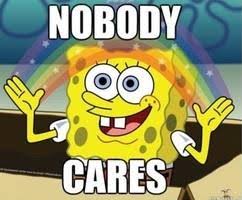 |
| My theory is in this test tube. |
Every Sunday after going to mass, my fiancee and I go to a great restaurant nearby for lunch. Every month the restaurant rolls out new specials for people to try out. Outside of the restaurant is a large sign that gives a detailed list of the new specials, and they have a separate menu given that details out what is new. We always look forward to seeing what's new at the beginning of every month, or, if we haven't been there in a while, seeing what has been added in the past few weeks.
What does this have to do with MMO's? Everything! Or, maybe you're not asking that question, at which point, I no longer sound smart. The dilemma I'd like to talk about today is revealing new content in your MMO to both existing players, new players, and players who may be coming back to your game. This all was triggered after I tried to get back into the Secret World over the weekend, and it got me thinking about how we tried to handle the situation on City of Heroes. As a warning, this post doesn't contain much in the way of "experienced" advice, but more of my own theory, which, as a
theory, is still flawed and also unproven. To the example!
I really enjoyed the Secret World when it came out, but unsubbed after barely playing it for a month for various reasons. I had some spare time over the weekend and decided to check it out again; I knew that they had roughly four months of updates that they had added on, so I was curious to see what was new. I resubscribed for a month, updated the game, and hopped in. I was then greeted by... nothing. There was no indication to me, as a lapsed subscriber who was coming back, that
anything new was added. I didn't know where to look for the new content and didn't really want to go website hunting for where the new content was. I played for a few hours, stumbling around to see if something was new or just a quest I could replay (since you can replay quests in the game). I found one new quest, which was the rocket launcher, but only because I hopped out of the game and looked up how to find the rocket launcher quest. All in all, however, there was nothing in the game to indicate that anything really had changed, however, they had added a ton of cool things; the ability to change your face/hair, adding height sliders, new missions, new alternate weapons, etc. As someone coming back into the game, however, none of that was apparent.
 |
| Someone told me I could get a chainsaw. Where does that happen and how soon can I have it in my hands? |
This leads into a problem that I feel a lot of MMO's suffer from, which is communicating to players when new content has been added. What is the difference in your game from the day before a huge content patch is added and afterwards? The content can be the best in the world, completely ground breaking, but if no one knows that they should go to this place or this person for new things, then it's just going to get overlooked. Something as simple as giving players a sign that they should go somewhere can make or break months of work that a team has done. Of course, your hardcore players will know where to go, but what about the casual player? The new player? The lapsed subscriber who is returning to try to be your prodigal son?
 |
| It's OK, we forgive you, all that matters is that you're back. Have you seen where you can spend money? |
In City of Heroes, we handled this with pop ups. Lots and lots of pop ups. Players will remember that at level 20 you were barraged with pop ups that new contacts were available. It wasn't the most elegant solution and it was one we weren't terribly happy with. We tried to implement a new solution, the contact finder, but that had its flaws as well. The main problem was that you, as a player, did not know when to use the contact finder. We never gave an indication that there was something new to look for in the finder and did not train the players that, when you had no idea what to do, you should use the contact finder.
What is the solution for games like Secret World? I have a theory, one that is totally unproven. I believe MMO's would benefit by having a, "updates" section that is clearly on the main UI and that flashes or does
something to indicate it has been updated. This section would tell the players about major updates to the game, the details of what has been added, and where that can be added. I really wish Secret World had this, as I was grasping at straws and frustrated at having to hunt through websites to find what was added in updates 1, 2, 3, and 4. I think it would be a great impression on a return subscriber to click on this and see just how much has been added to the game and where to begin. It would've been great to test this in City of Heroes and divide it up by the issue updates; imagine being able to see, in-game, a detailed list of what was added with each issue update.
 |
| Good GOD! They added an END GAME?! |
I'd like to emphasize the fact that this is all
theory. I could be completely wrong about all of this, but I'd like to think I'm at least
mostly right about the fact that it is a problem communicating new content to players in the game. Secret World's method of adding content is easy for a new player to see, as they're going through the game and just seeing the content, and current players will most likely be chomping at the bits for what is new. However, subscribers looking to come back to your game might be on the edge regarding whether or not to come back, and you want to do as much legwork as possible to convince them that the game as it is now is more awesome than when they left.
I would be really interested to see a game try this out, or, if anyone knows of one, a game that does something like this. I don't know of one off the top of my head, but I'm not foolish/prideful enough (yet, give it a few more years) to think that my idea is completely original. Of course, if it is original, then I just posted it for free on the internet for anyone else to use and take credit for it. But please, if you're thinking of stealing it, keep in mind, I like being able to pay for dinners and lunches for myself and my fiancee. Would you really steal an idea from a guy trying to buy a nice lunch for his soon to be wife?
 |
| =( |